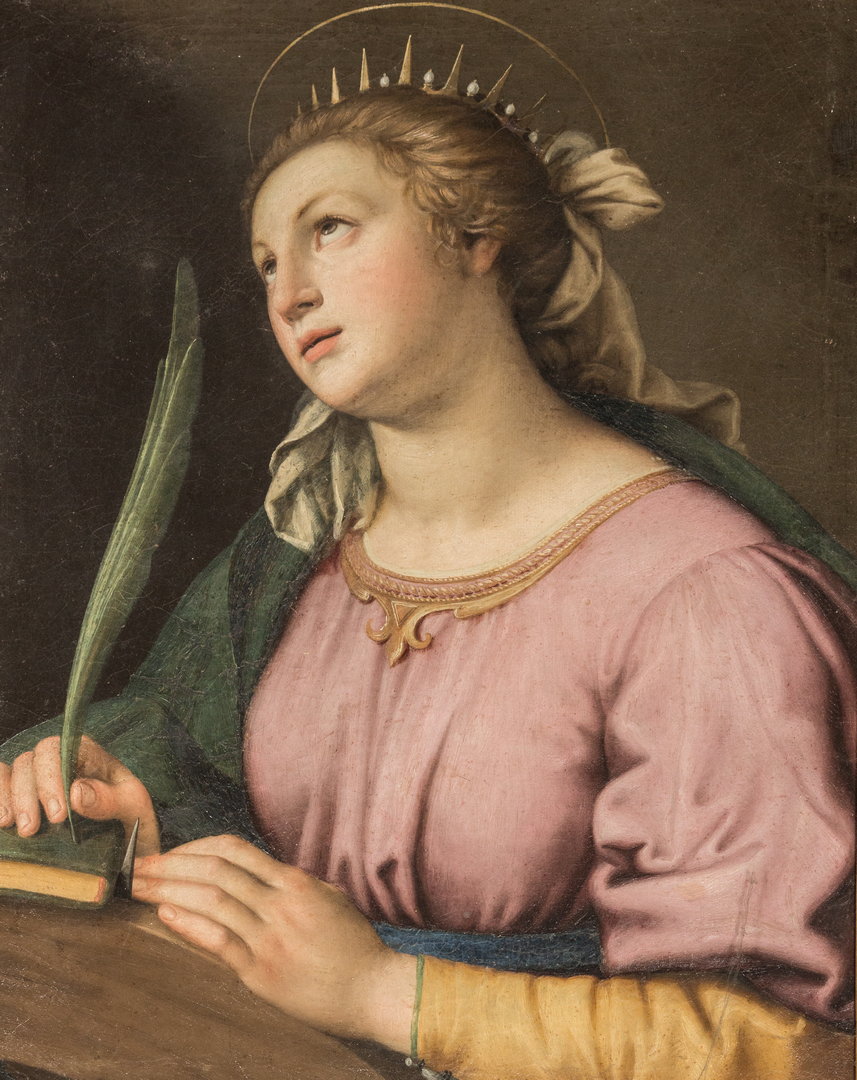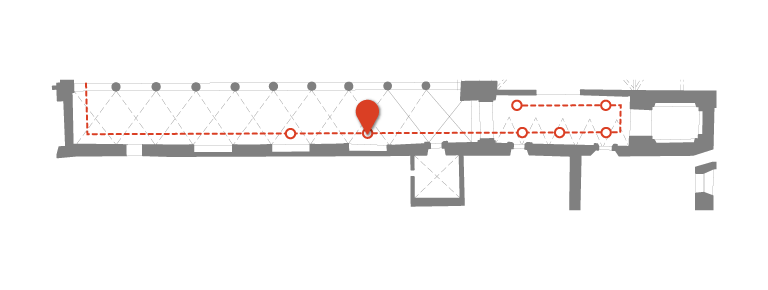Tu sei qui
SANTA CATERINA D’ALESSANDRIA
The painting of Saint Catherine of Alexandria, shown with the martyr’s palm and the spiked wheel she was tortured with, completes the series of paintings of holy martyrs executed by Giovan Battista Salvi, called il Sassoferrato, for the monastery of San Pietro. As well as this painting, those of Santa Giustina and Santa Apollonia, both in San Pietro, Sant’Agnese and Santa Barbara in the “Tesori d’Arte” gallery of the Fondazione per l’Istruzione Agraria are also part of the series. While inspired by sixteenth-century painting, the style of Santa Caterina d’Alessandria does not appear to refer to a specific model, and might therefore be considered the product of the painter’s inspiration. The classicism of the seventeenth century is incorporated in Salvi’s style with the rich figurative tradition of the Renaissance, and the work of Perugino and Raphael in particular. The painter derived his own peculiar stylistic characteristics from this unlikely combination, a perfect blend of Renaissance form and the devotional spirit of the seventeenth century. It is not by chance that Sassoferrato, called “the painter of beautiful Madonnas”, chose as his reference Perugino, “il divin pittore” (“the divine painter”).


